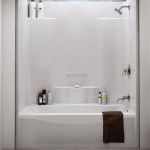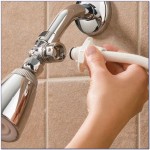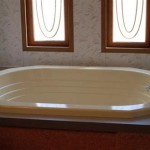Bathtub Safety Rails For Seniors: Enhancing Bathroom Security and Independence
Maintaining independence and safety within the home is crucial for seniors, and the bathroom, statistically one of the most hazardous areas, requires particular attention. Slips and falls are a significant concern for the elderly population, often leading to serious injuries. Bathtub safety rails represent a practical and effective solution for mitigating this risk, providing stability and support during entry and exit from the bathtub.
Bathtub safety rails, also known as grab bars, are designed to offer users a secure point of contact, facilitating balance and reducing the likelihood of falls. These devices are engineered to withstand substantial weight and are typically installed on the side of the bathtub or surrounding walls. The availability of various designs and installation methods ensures adaptability to diverse bathroom layouts and individual user needs.
The Importance of Bathtub Safety Rails
The elderly are more susceptible to falls due to age-related factors such as decreased muscle strength, impaired balance, and reduced vision. The wet and slippery surfaces inherent in the bathroom environment further exacerbate these risks. A seemingly minor slip can result in fractures, head injuries, or other debilitating conditions, potentially leading to a loss of independence and a decline in overall quality of life.
Bathtub safety rails offer a robust solution by providing a firm grip and stable support. This assistance allows seniors to enter and exit the bathtub with greater confidence and control, minimizing the risk of losing balance. The simple act of having something secure to hold onto can make a significant difference in preventing falls and promoting a sense of security.
Beyond the immediate safety benefits, bathtub safety rails contribute to the preservation of independence. Seniors who feel secure in their ability to manage personal hygiene tasks independently are more likely to maintain their self-esteem and overall well-being. The installation of these rails empowers individuals to retain control over their daily routines and reduces their reliance on external assistance.
Types of Bathtub Safety Rails
The market offers a diverse range of bathtub safety rails, each designed with specific features and installation methods to suit varying needs and bathroom configurations. Understanding the different types available is essential for selecting the most appropriate option.
Clamp-On Grab Bars: These bars attach directly to the side of the bathtub using a clamping mechanism. They are typically easy to install and require no drilling or permanent modifications to the bathtub or walls. Clamp-on grab bars are often adjustable to accommodate different bathtub widths. However, it is crucial to ensure that the clamp is securely fastened and that the bar is rated to support the user's weight.
Wall-Mounted Grab Bars: These bars are securely fastened to the bathroom wall using screws and anchors. Wall-mounted grab bars offer superior stability and weight-bearing capacity compared to clamp-on models. Proper installation is crucial to ensure that the bars are securely anchored to the wall studs or reinforced with appropriate backing. These are considered a more permanent and reliable solution, especially for individuals requiring significant support.
Suction Cup Grab Bars: These bars utilize suction cups to adhere to smooth, non-porous surfaces. Suction cup grab bars are easy to install and remove, making them a convenient option for travel or temporary use. However, their weight-bearing capacity is limited, and they should not be relied upon as the primary source of support. They are best suited for providing supplemental balance assistance.
Floor-to-Ceiling Grab Bars: These bars extend from the floor to the ceiling, providing a vertical support structure. Floor-to-ceiling grab bars are particularly useful for individuals who require assistance with transferring from a standing to a sitting position or vice versa. They can be placed strategically near the bathtub to provide support during entry and exit.
Combination Grab Bars: Some models combine features of different types, such as a wall-mounted bar with an integrated suction cup for added stability. These combination bars offer a balance of security and ease of installation.
When selecting a bathtub safety rail, it is important to consider the user's individual needs, the bathroom layout, and the weight-bearing capacity of the device. Consulting with a healthcare professional or occupational therapist can provide valuable guidance in choosing the most appropriate option.
Factors to Consider When Choosing a Bathtub Safety Rail
Selecting the right bathtub safety rail involves careful consideration of several factors to ensure optimal safety, functionality, and compatibility with the existing bathroom environment.
User Needs: The individual's physical capabilities and specific needs are paramount. Factors such as weight, mobility limitations, and balance issues should be carefully assessed. Individuals with significant mobility challenges may require a more robust and strategically placed grab bar system.
Bathroom Layout: The configuration of the bathroom, including the position of the bathtub, toilet, and other fixtures, will influence the type and placement of the safety rail. Adequate space must be available for maneuvering and accessing the grab bar without obstruction. Consider the proximity to other fixtures and ensure the grab bar doesn't impede access to them.
Installation: The installation method should be appropriate for the type of safety rail and the construction of the bathroom walls. Wall-mounted grab bars require secure attachment to wall studs or reinforced backing to ensure adequate weight-bearing capacity. Clamp-on and suction cup models are typically easier to install but may have limitations in terms of stability and weight capacity. Professional installation is recommended for wall-mounted options to ensure proper anchoring and safety.
Material and Finish: Bathtub safety rails are typically made of stainless steel, aluminum, or plastic. Stainless steel is durable, corrosion-resistant, and easy to clean. Aluminum is lightweight and also resistant to corrosion. Plastic is a more affordable option but may not be as durable as metal. The finish should be non-slip and easy to grip, even when wet. Consider finishes that blend well with the existing bathroom décor.
Weight Capacity: Ensure that the safety rail is rated to support the user's weight. Exceeding the weight capacity can compromise the integrity of the device and increase the risk of falls. Always check the manufacturer's specifications for weight limits.
Grip and Ergonomics: The grab bar should have a comfortable and secure grip. Look for features such as textured surfaces or contoured designs to enhance grip, especially for individuals with arthritis or limited hand strength. The diameter and shape of the grab bar should be ergonomically designed to fit comfortably in the hand.
Compliance and Certifications: Look for safety rails that comply with relevant safety standards and certifications, such as those from the Americans with Disabilities Act (ADA). These certifications ensure that the device meets specific requirements for accessibility and safety.
Cost: Bathtub safety rails range in price depending on the type, material, and features. Consider the budget and prioritize features that are most important for safety and functionality. While affordability is a factor, it should not compromise the quality and reliability of the device.
When making a selection, consider a consultation with an occupational therapist. These professionals can assess the individual's specific needs and make recommendations tailored to their abilities and the bathroom environment.
Proper installation is critical. For wall-mounted grab bars, professional installation ensures the bar is securely anchored to wall studs or reinforced backing, providing a safe and reliable support system. Improper installation can lead to the grab bar detaching or failing under weight, increasing the risk of injury.
Regularly inspect the safety rail for any signs of damage, such as cracks, loose fasteners, or corrosion. Replace the device if any damage is detected. Periodic cleaning with a mild soap and water solution will help maintain the integrity and appearance of the safety rail.
Furthermore, it is important to educate the user on the proper use of the safety rail. Demonstrate the correct gripping technique and emphasize the importance of using the device consistently when entering and exiting the bathtub. Encourage the user to seek assistance if they feel unsteady or unsure of their balance.
By taking these factors into account, individuals can choose a bathtub safety rail that provides optimal safety, comfort, and independence, promoting a safer and more accessible bathroom environment for seniors.

Glacier Bay 14 In Bathtub Rail Safety Grab Bar White Fgb204gb Thd The Home Depot

Incredible Ping Paradise Bathtub Safety Rail Medical Adjustable Tub Grab Bar Handle Clamp Handrail Support For Seniors And Elderly Grip

Bathtub Safety Rail Medical Adjustable Tub Grab Bar Handle Clamp Handrail Support For Seniors And Elderly Com

Step2tub Bathtub Safety Step And Hand Rail Bath

The Best Grab Bars A 2024 Guide Forbes Health

Glacier Bay 14 In Bathtub Rail Safety Grab Bar White Fgb204gb Thd The Home Depot

Quick Delivery Drive Medical Parallel Bathtub Grab Bar Safety Rail White Grip

Bathtub Safety Rail Tub Handrail Grab Bar Vive Health

Bathtub Safety Rail Tub Handrail Grab Bar Vive Health

Bathroom Grab Bars Purpose And Benefits For Seniors Step2health








